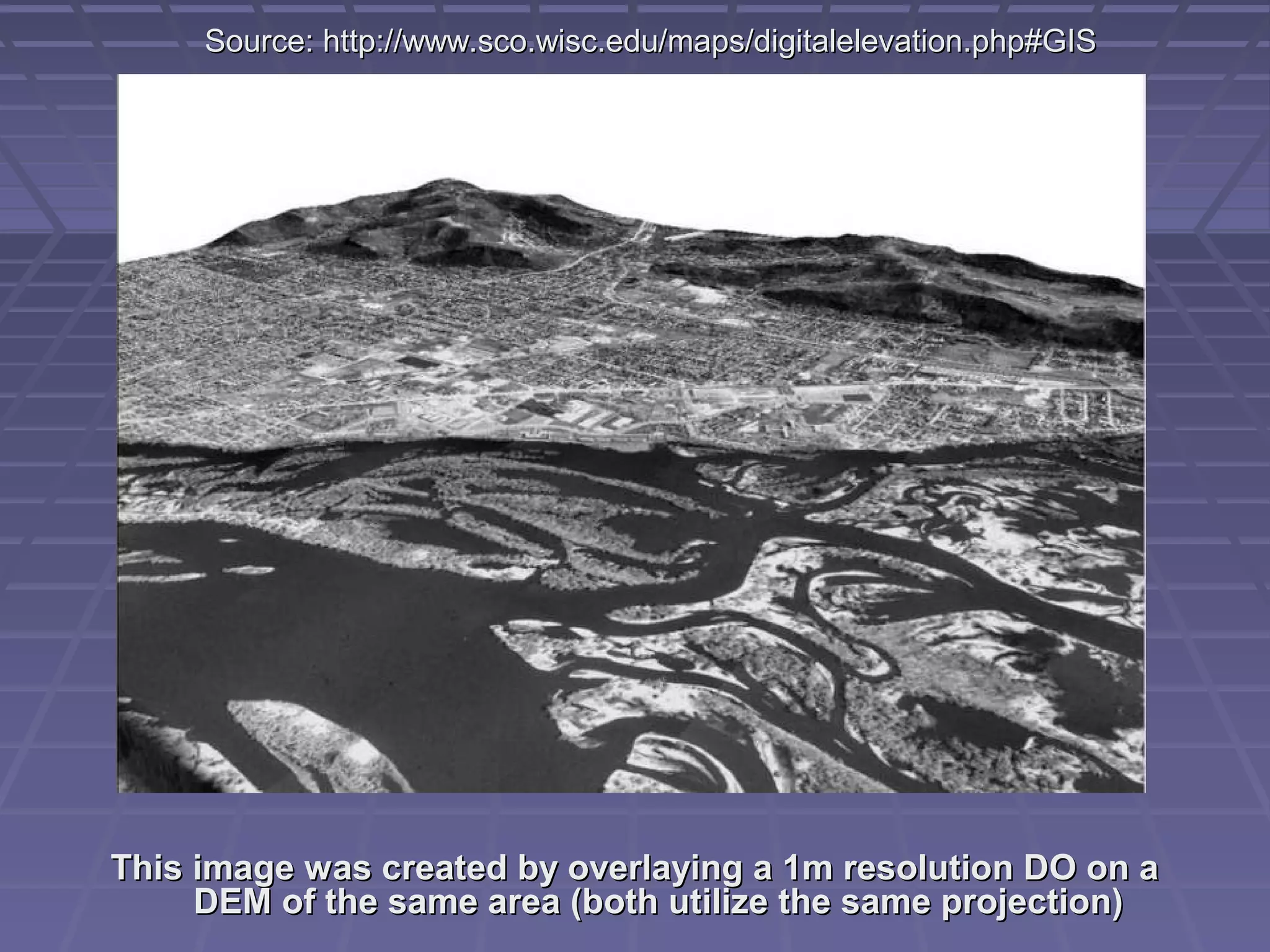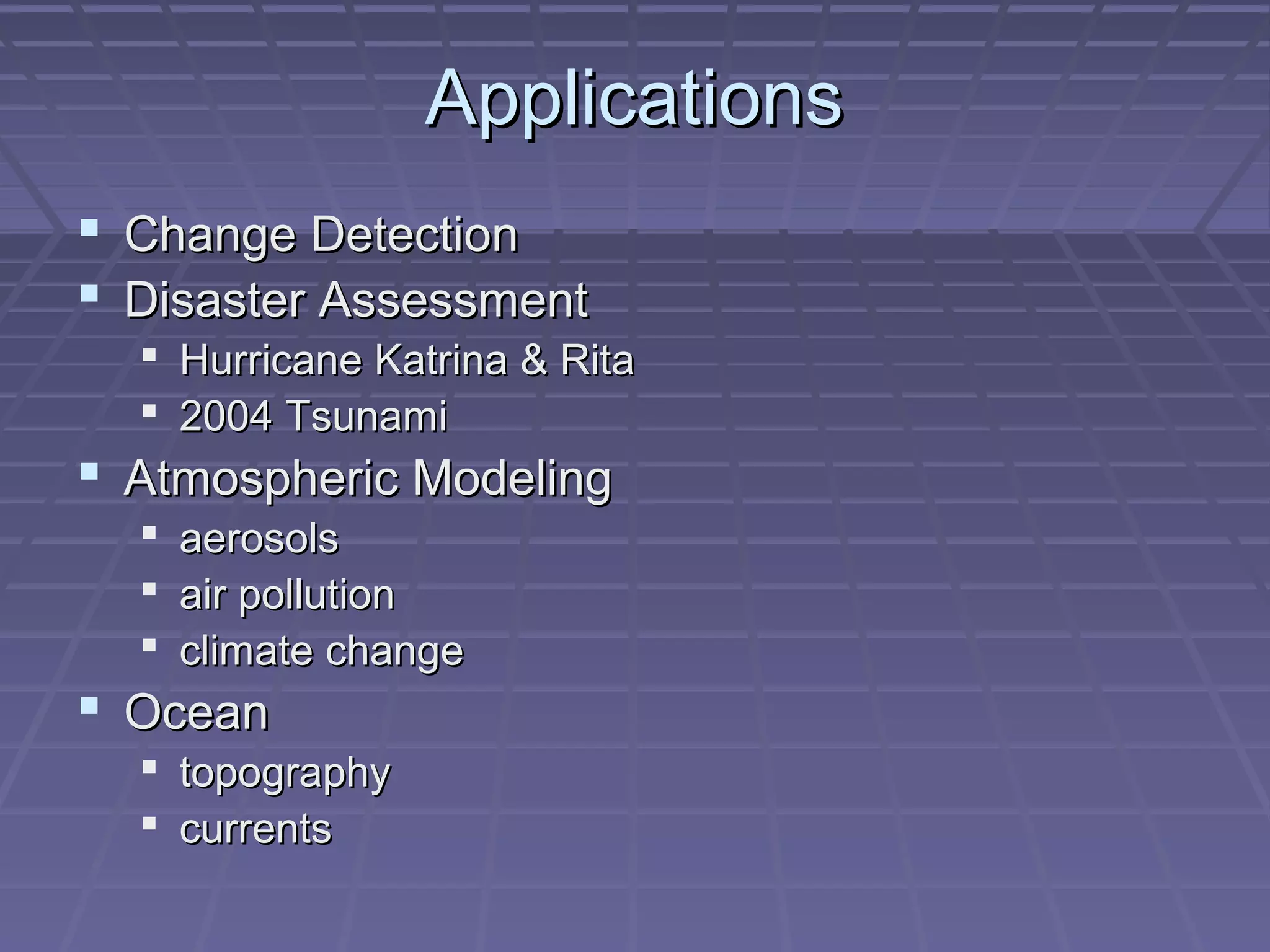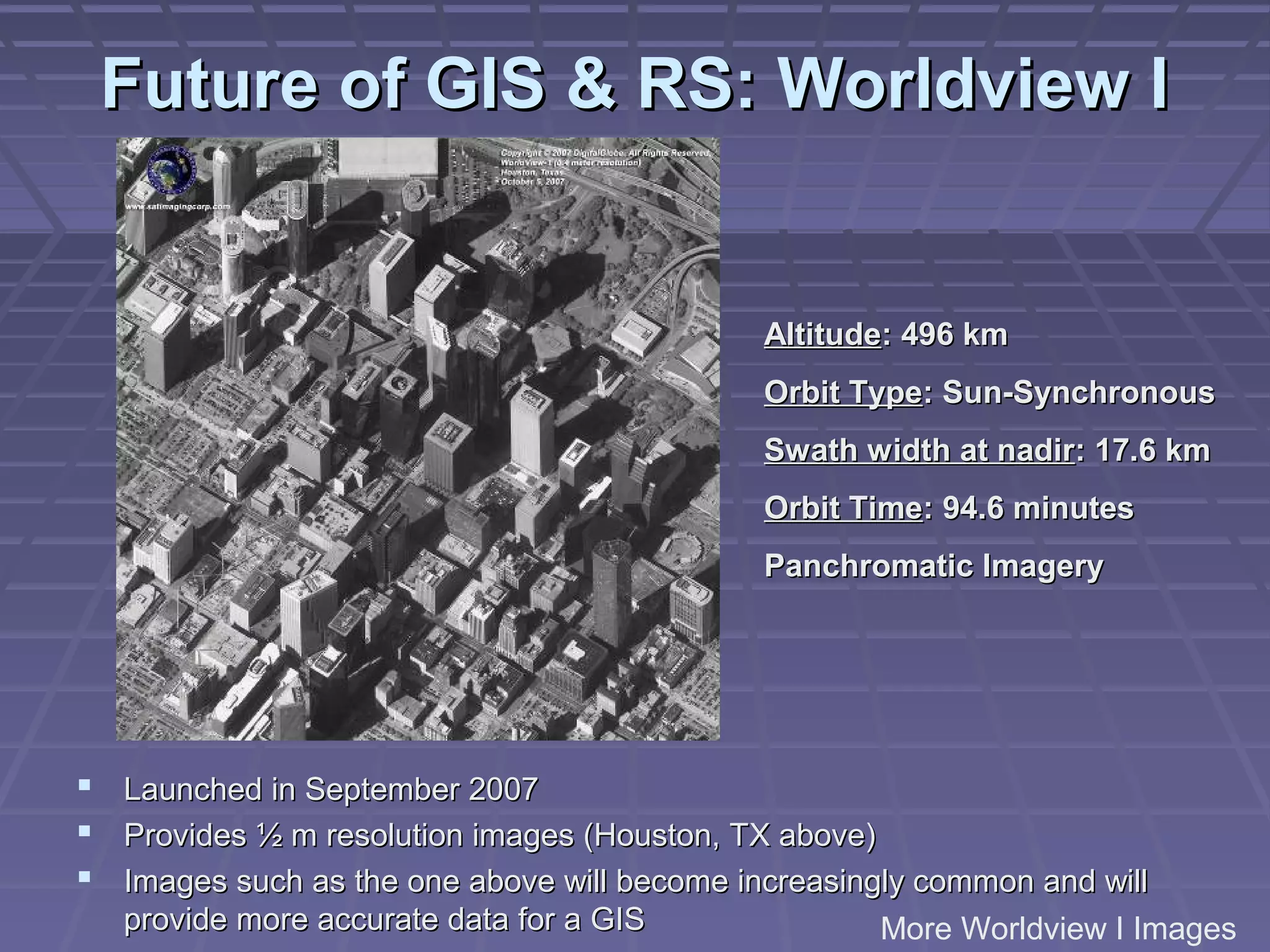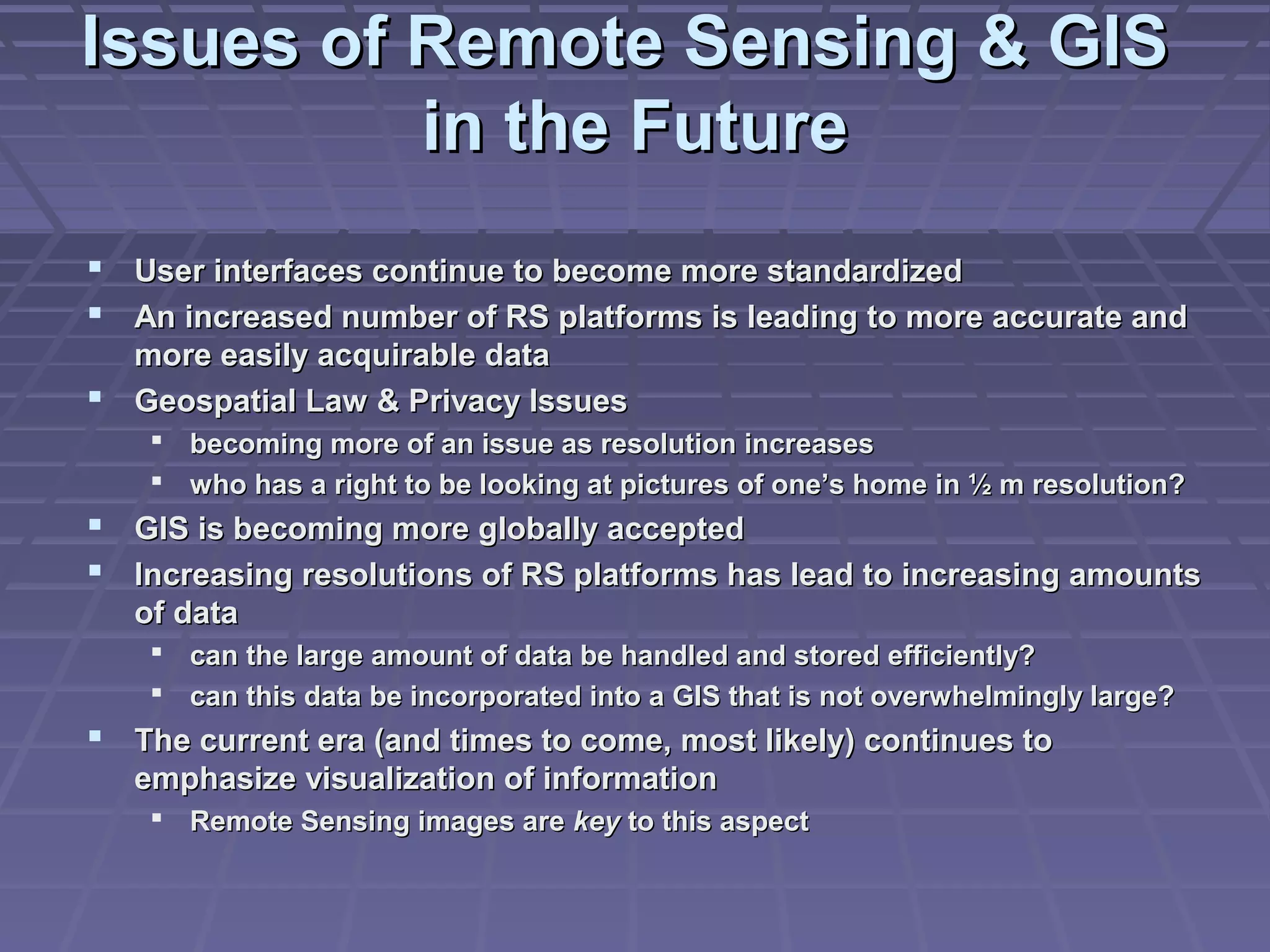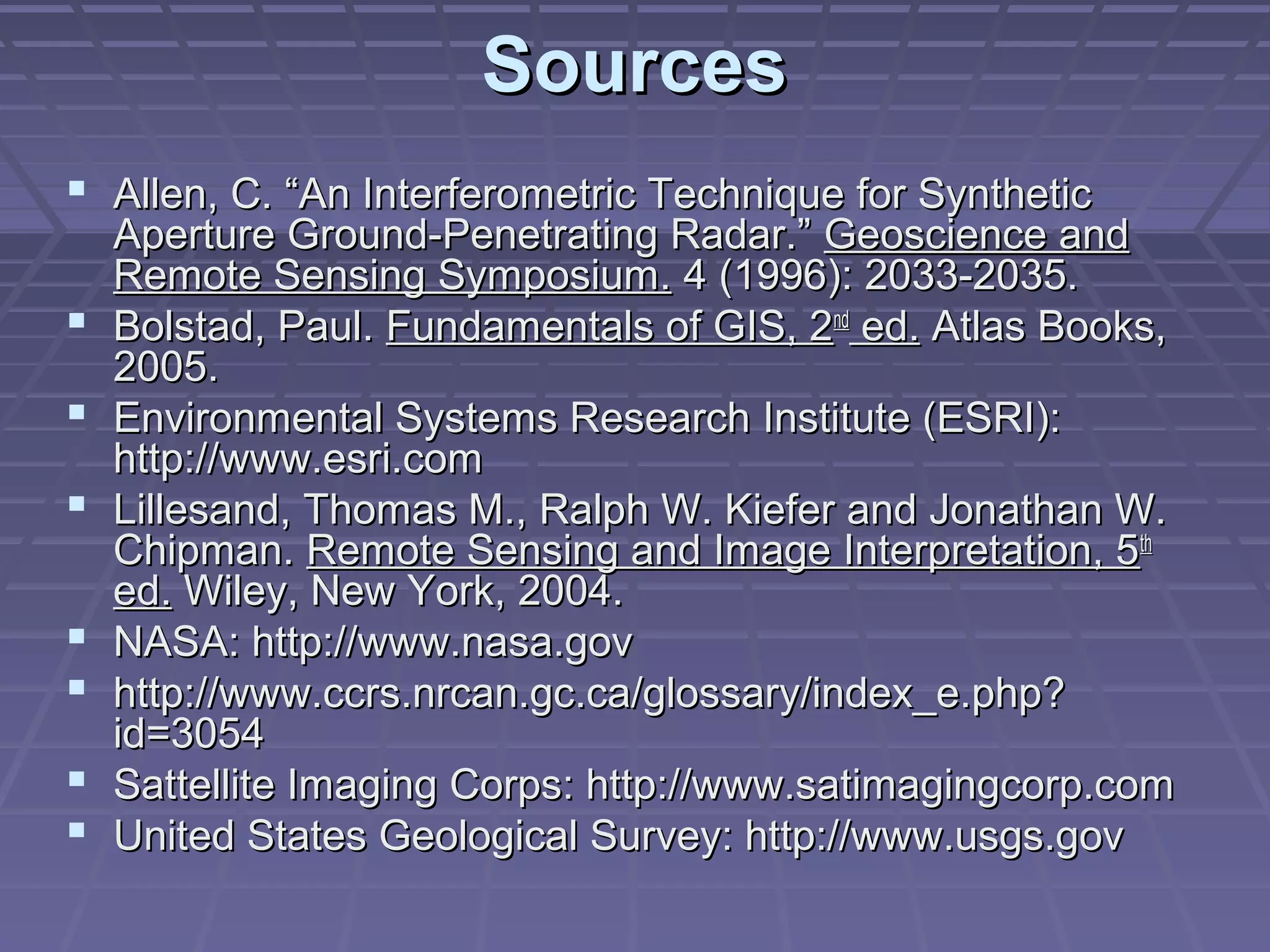Geographic Information Systems rely heavily on data from Remote Sensing platforms like satellites, which provide imagery and information on land cover, terrain models, and changes over time. As Remote Sensing technologies advance with higher resolution sensors, more data can be incorporated into GIS maps and analyzed to study various environmental topics. Issues around privacy and data storage may increase as more detailed imagery becomes available.
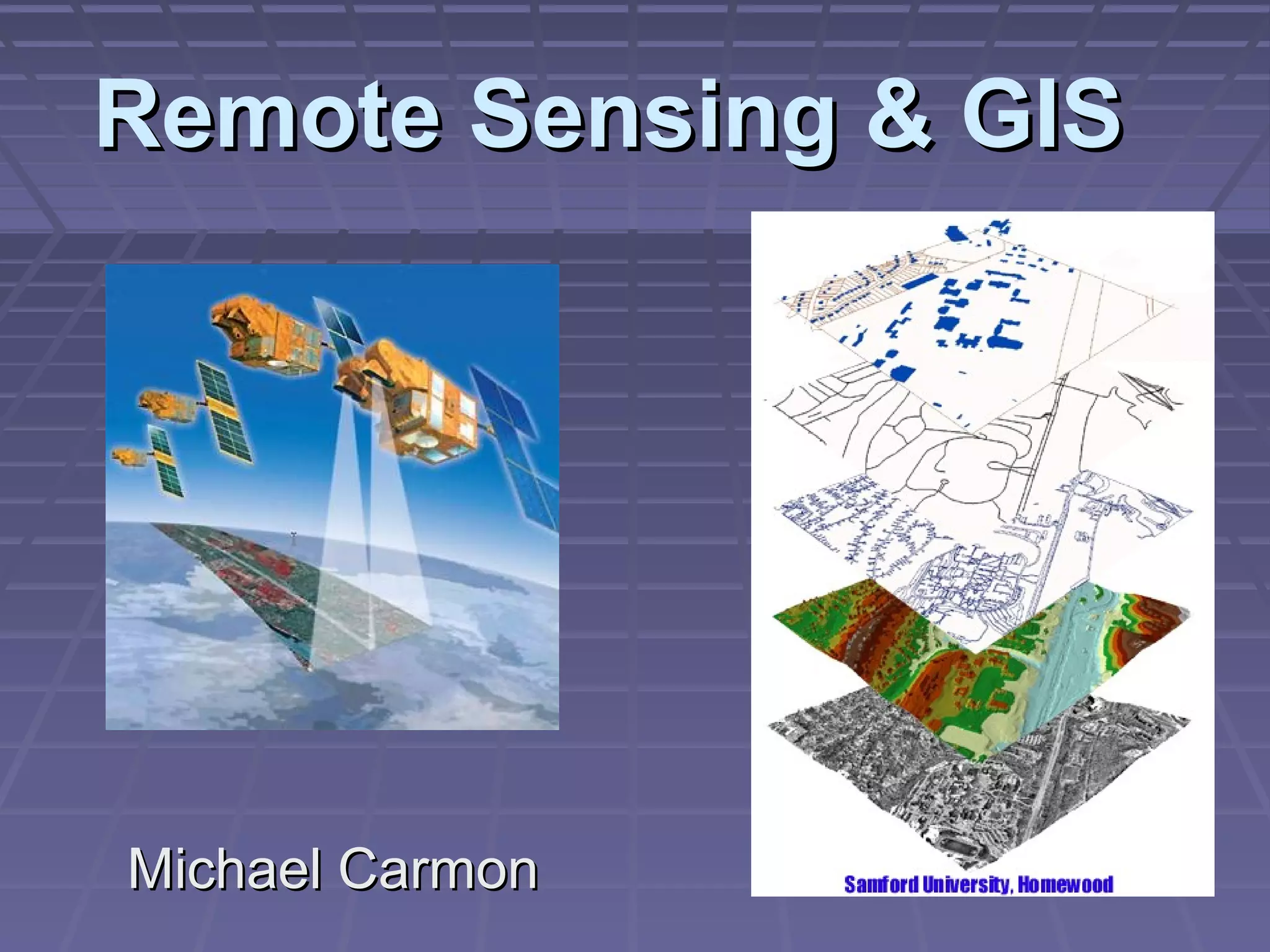

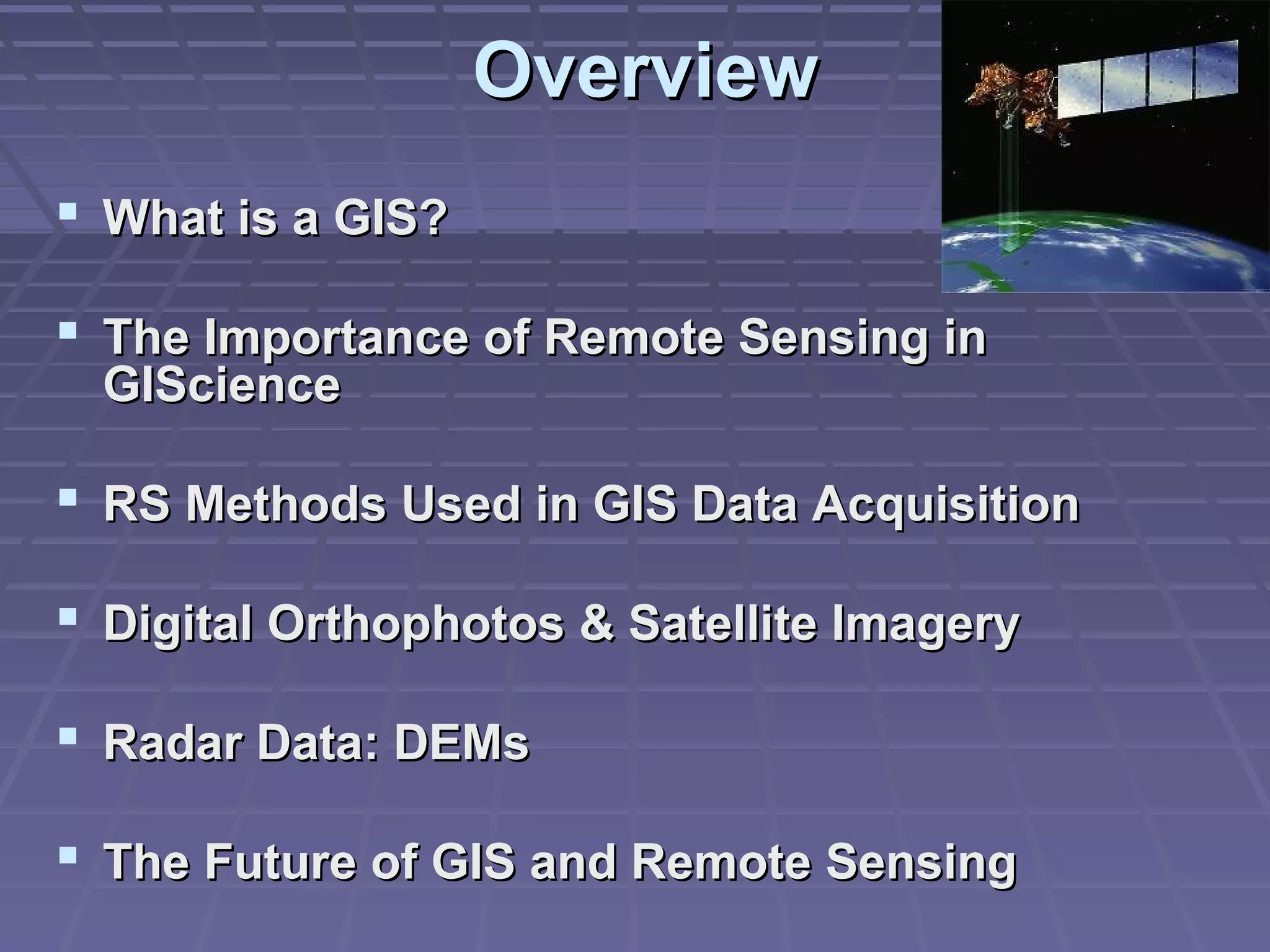
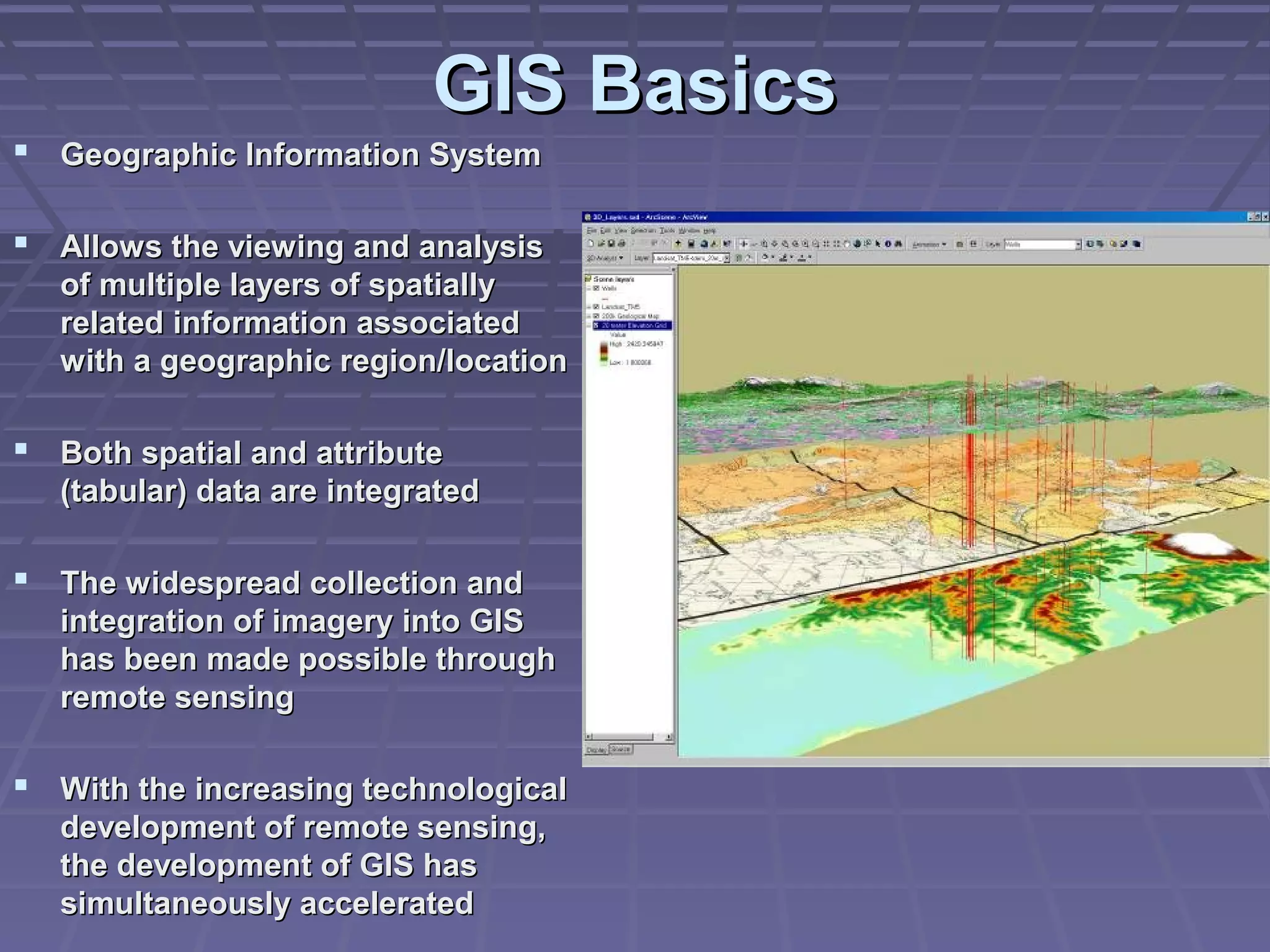
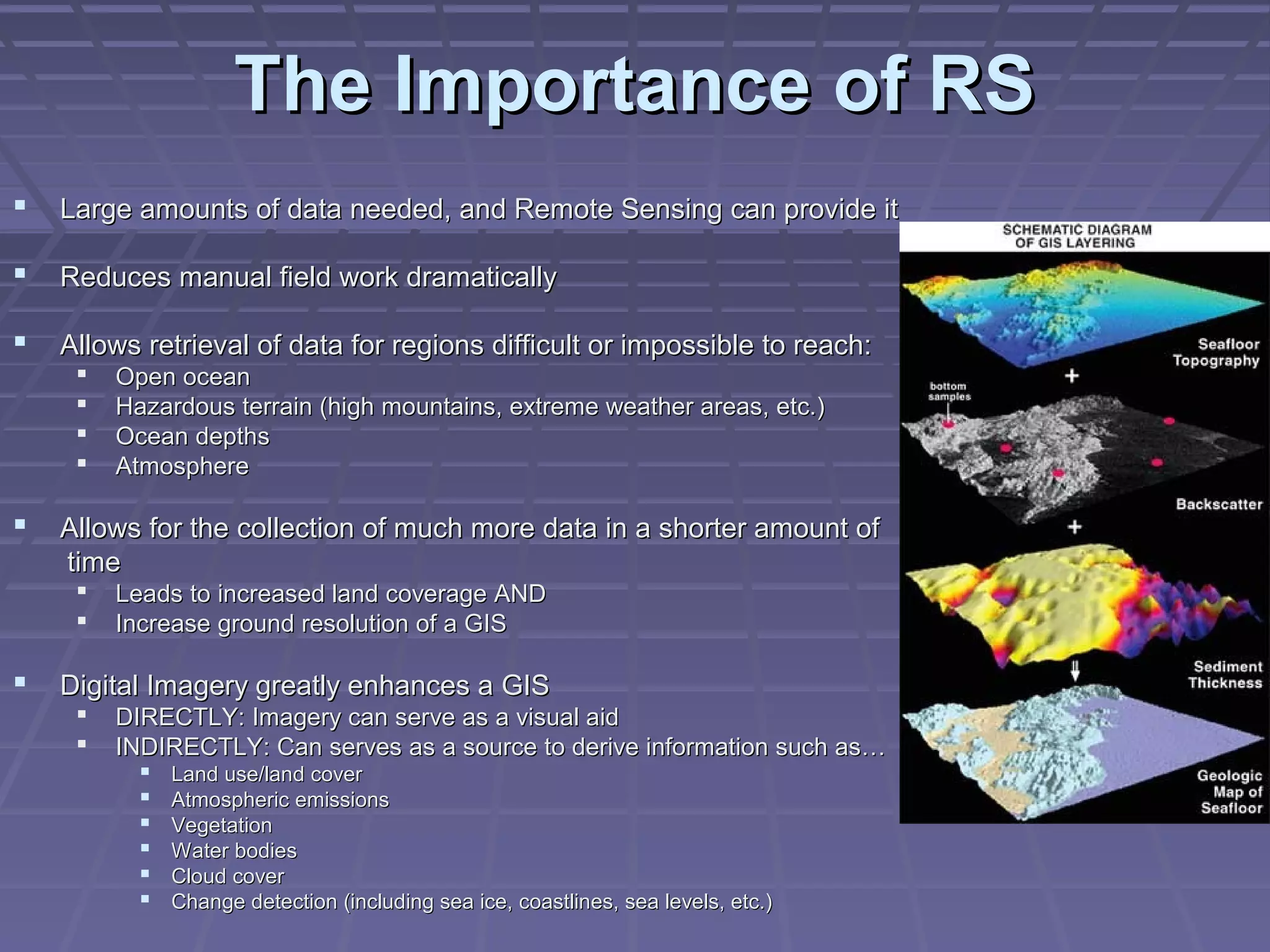
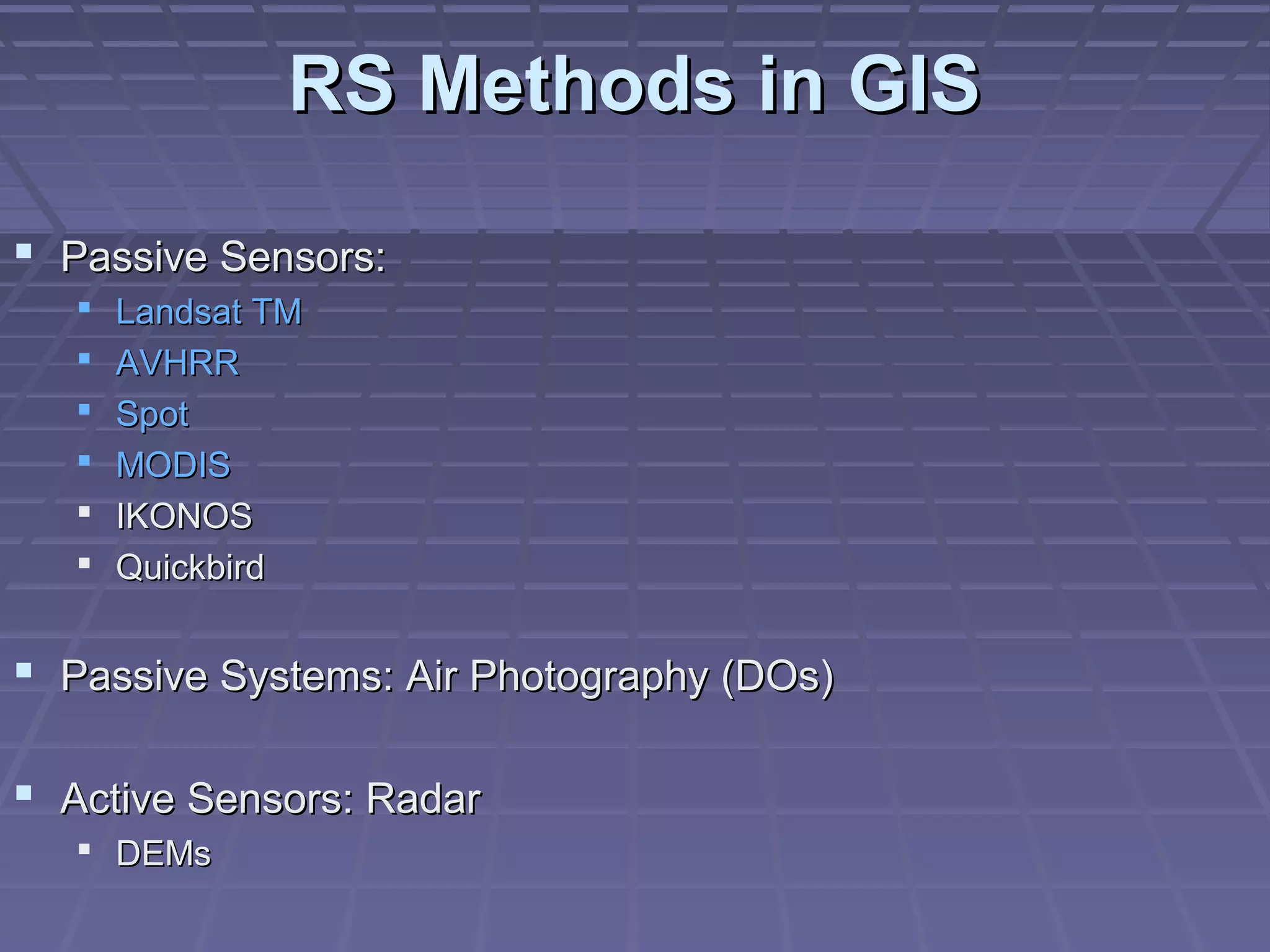
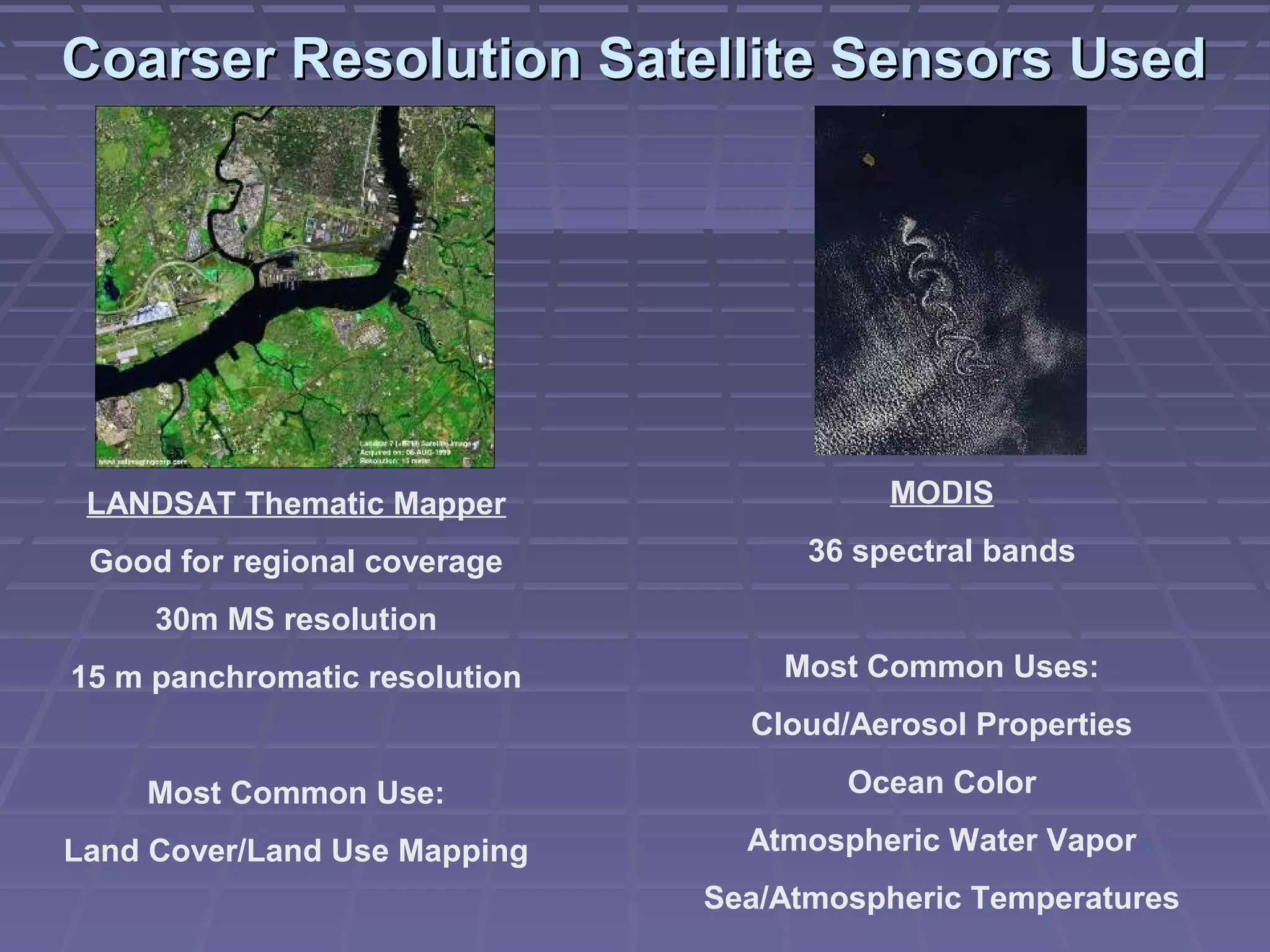
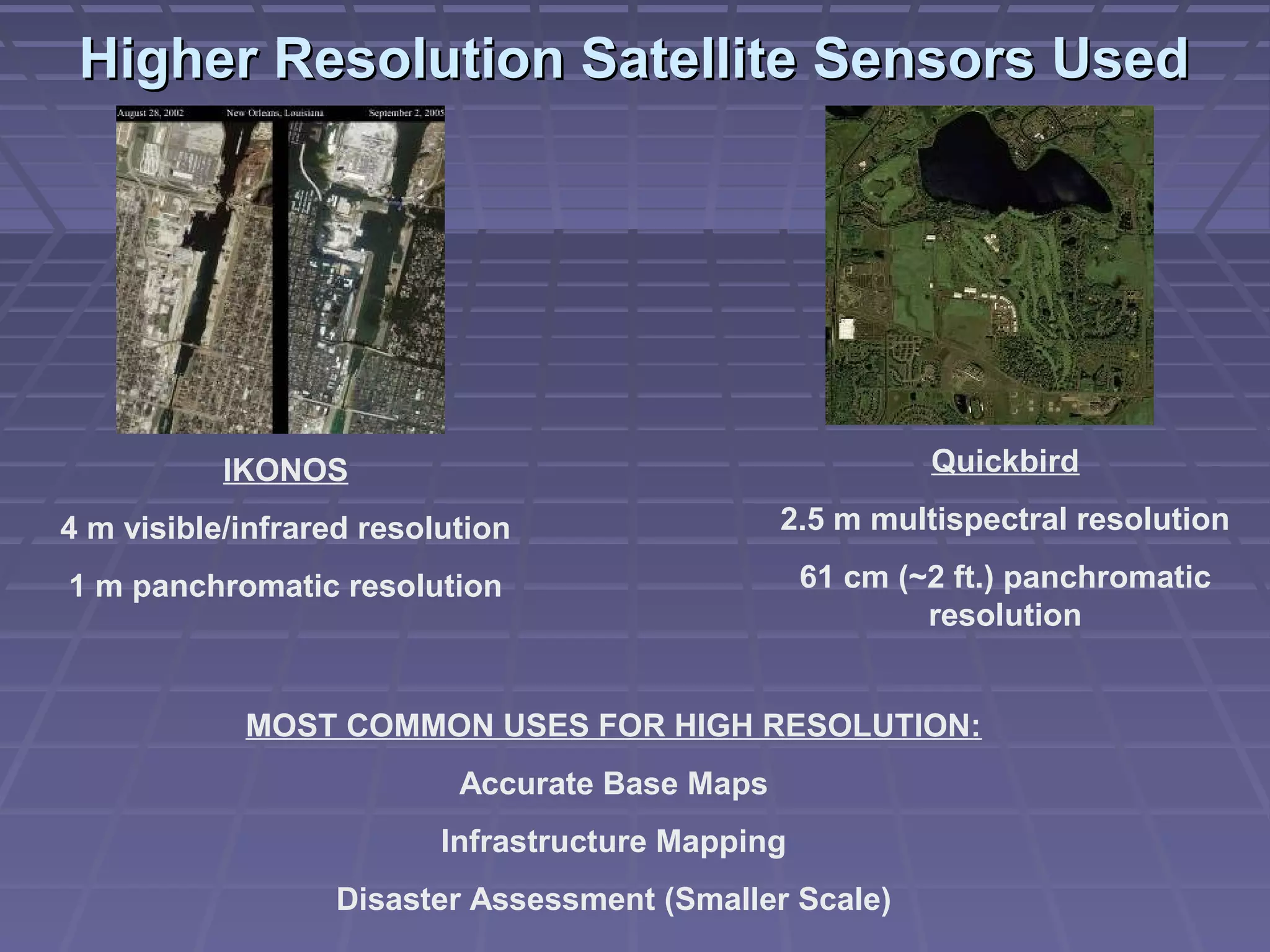

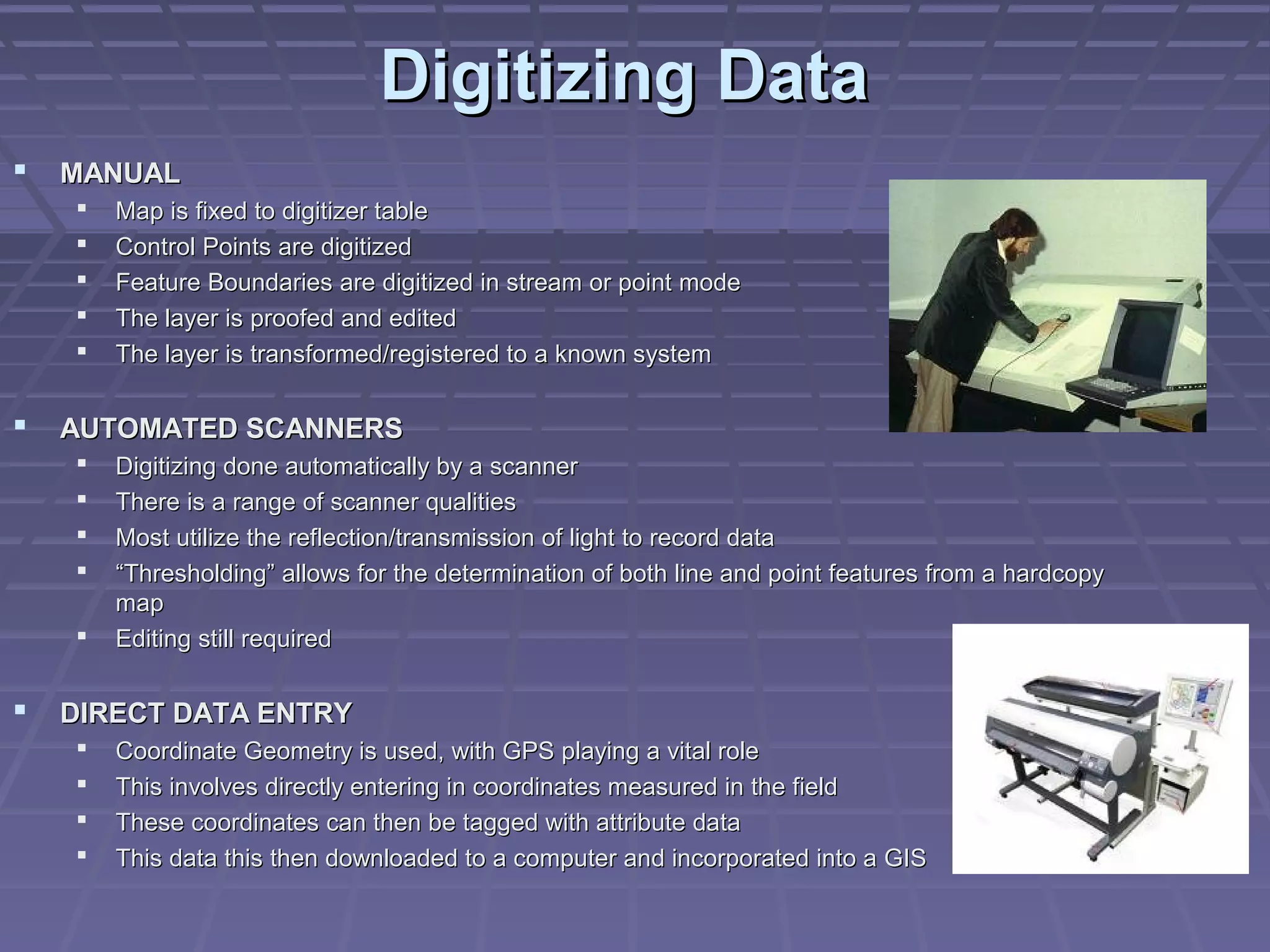
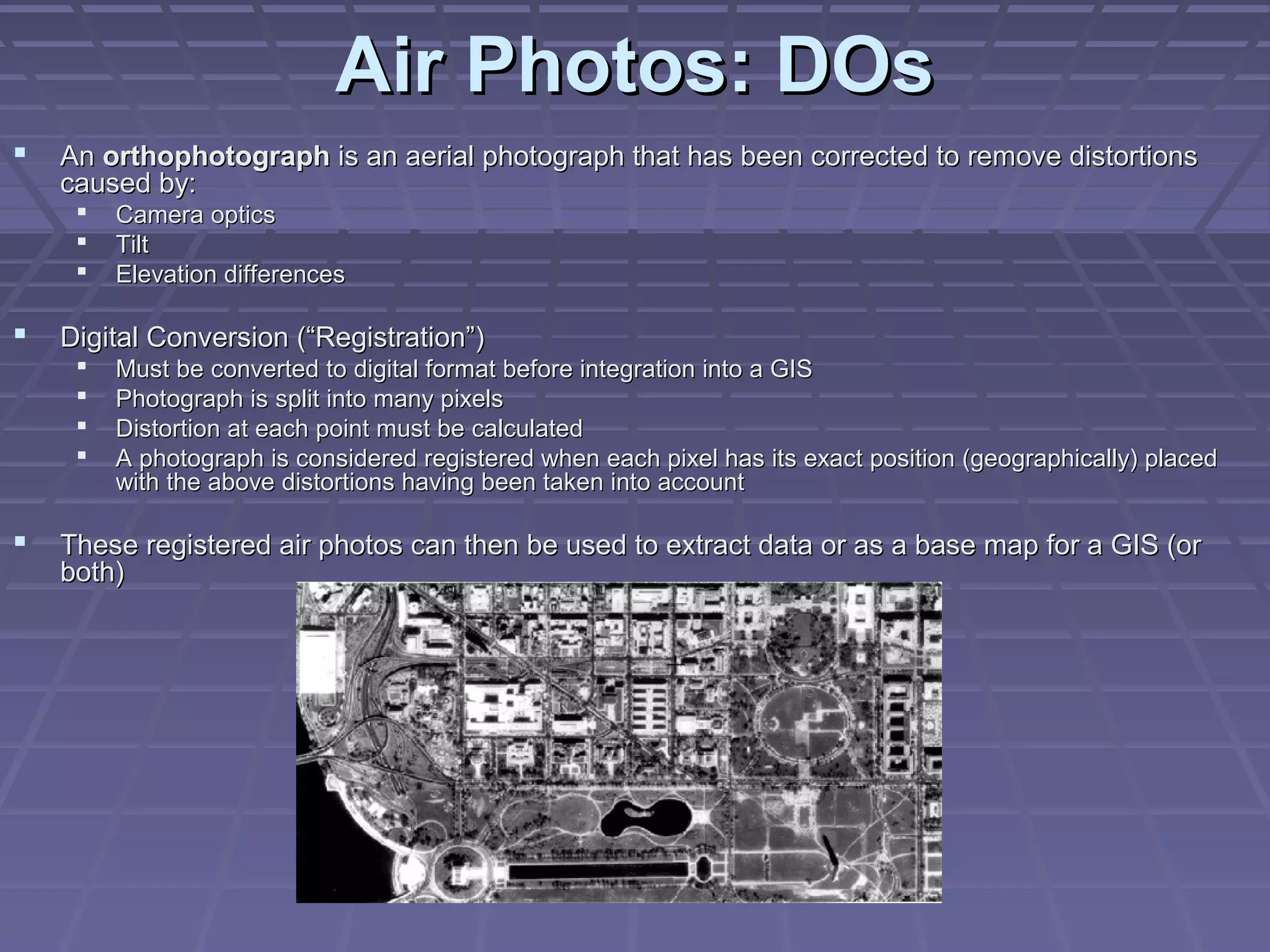
![Radar Data: DEMs
Active sensors provide the
most thorough, accurate and
intricate model of topography
Radar can reach places nearly
impossible to survey manually
Interferometric Synthetic
Aperture Radar
Two passes of a radar satellite
are used
Any phase difference of
returned echoes yields
information about the angle
from which the echo was
returned h is pixel height and phi is phase
Allows for topographic difference:
information to be derived
2π
φ= [ Bx sin θ − B y cos θ ]
λ
h = H − ρ (cos θ )](https://image.slidesharecdn.com/carmonremotesensinggis-130306083131-phpapp02/75/Carmon-remote-sensinggis-12-2048.jpg)
